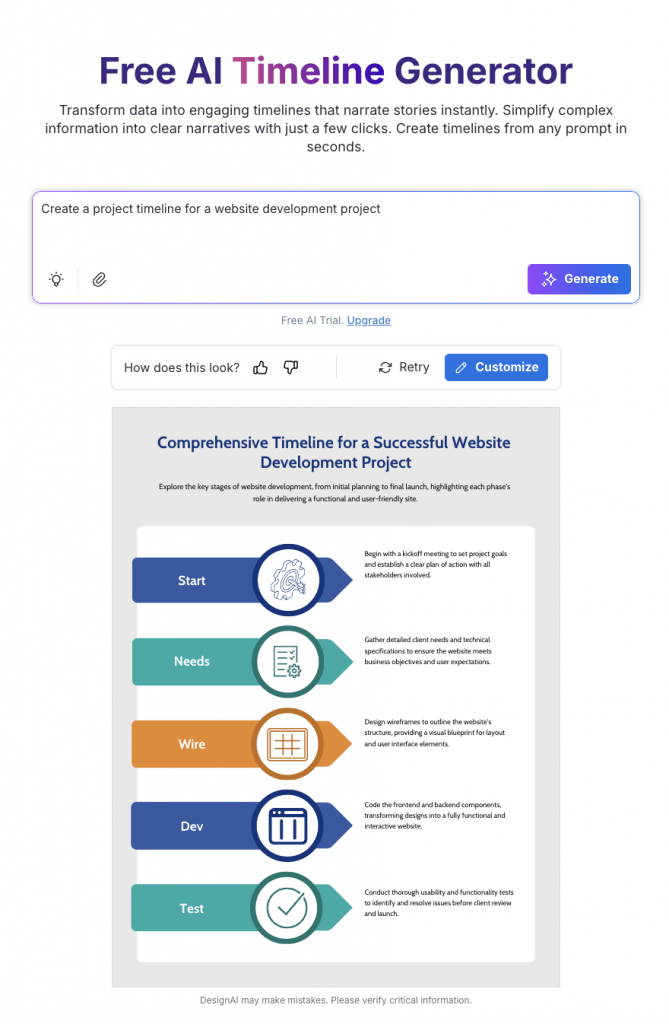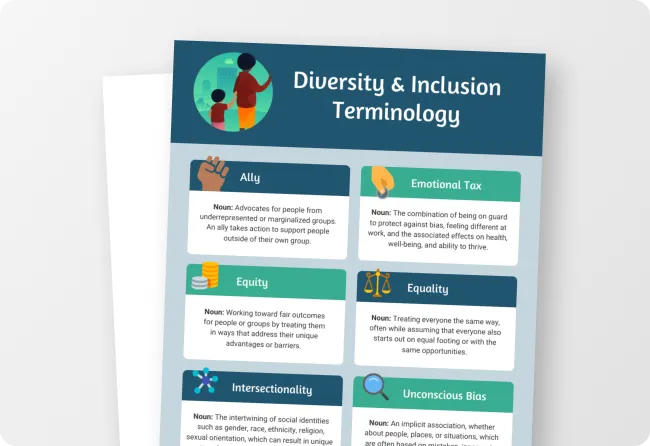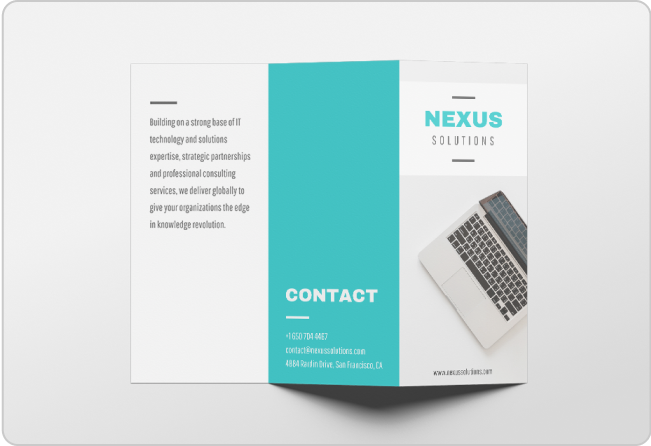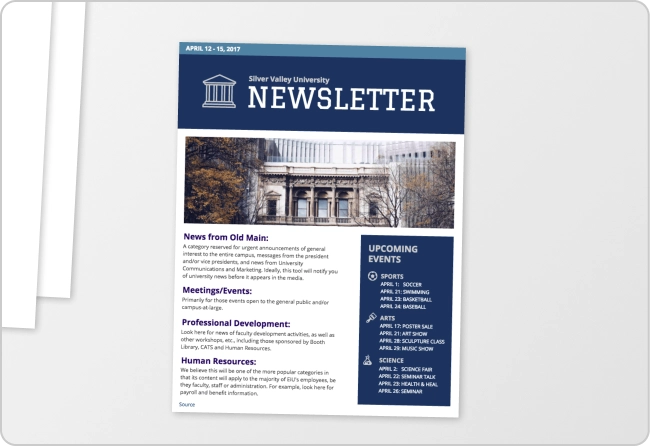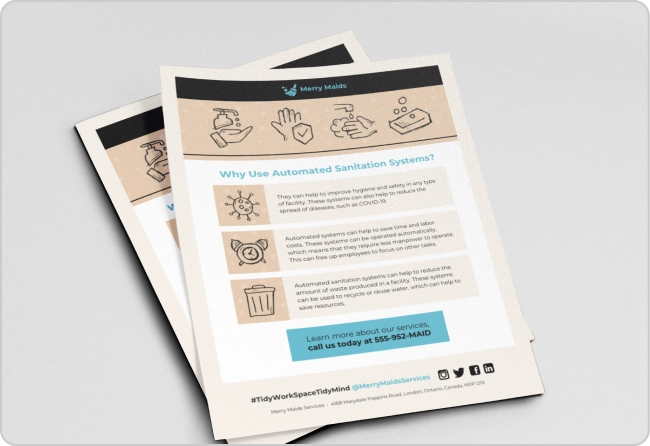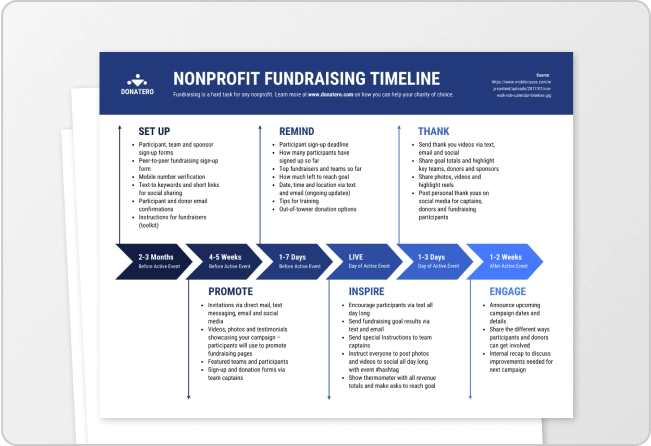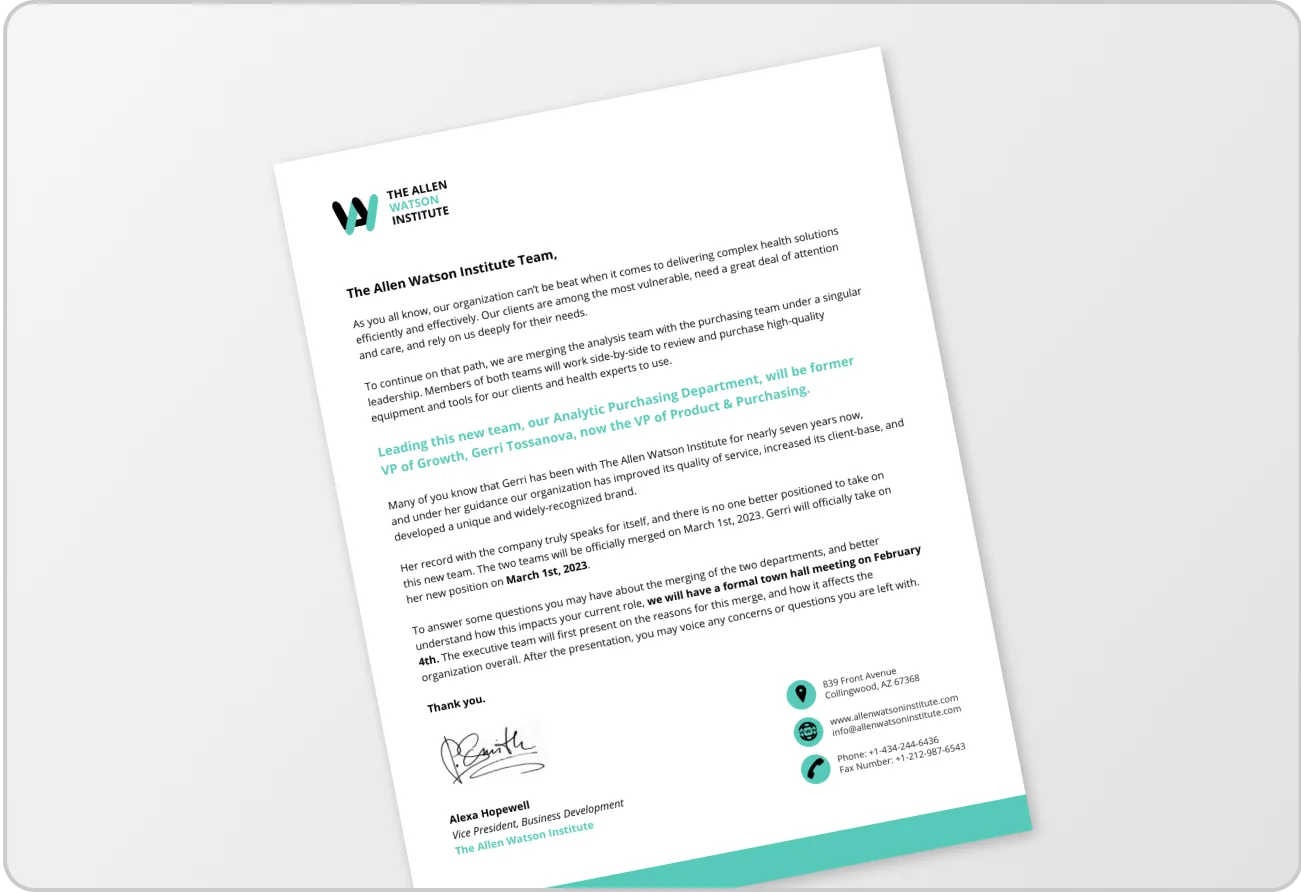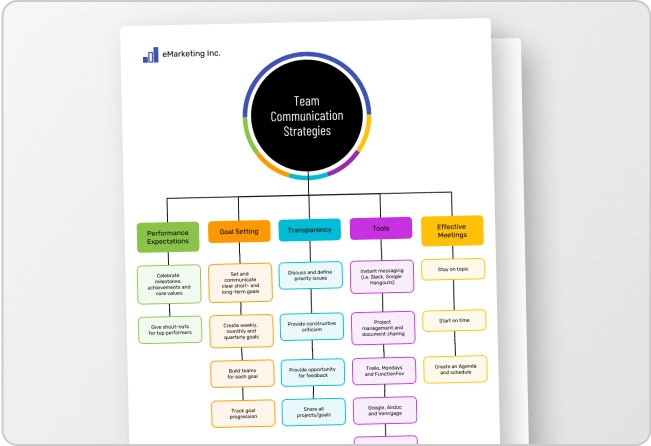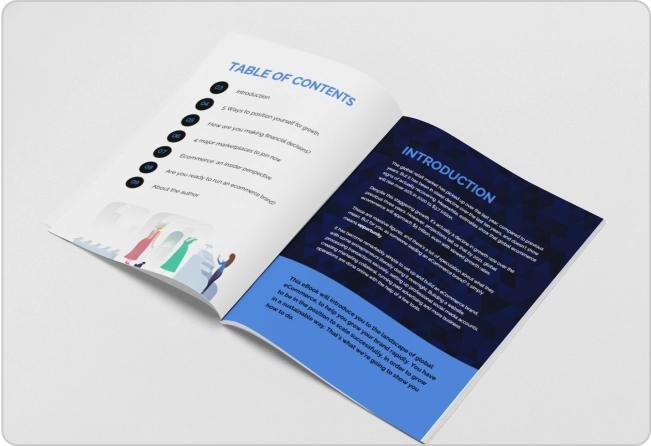
What’s one similarity between missed deadlines and confused priorities? Both are experts at missing the point.
But also, a good project timeline can fix both of them.
When you or your team miss deadlines or mix up priorities, you usually end up paying for it with explanations, overwork and damaged reputation.
A clear project timeline can ensure you don’t end up in a mess. It can help you know who’s doing what, by when and why.
Whether you’re leading a product launch or overseeing a marketing campaign, a project timeline gives you control, clarity and consistency.
This blog will show you how to create a project timeline that actually works, one you can stick to.
What is a project timeline?
A project timeline is a visual plan that maps out tasks, deadlines and key milestones across the life cycle of a project.
Think of it like Google Maps (or Apple Maps); it shows where you want to go, how you’ll get there and how long it’ll take you to reach.
Here’s a good example of a website development project timeline, organized by weekly sprints over a three-month period:
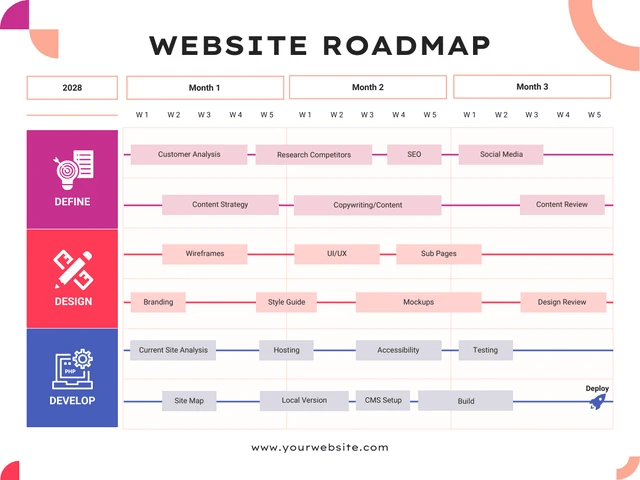
A project timeline gives your team a shared view of the work cut out for everyone. It answers questions like:
- What needs to happen first?
- Who’s responsible for what?
- How long will each step take?
But why use a project timeline? You might as well use to-do lists and spreadsheets (or just your memory) to keep things organized, right?
Well, a good timeline does a few important things:
- It builds clarity and lets everyone see the plan.
- It sets priorities straight so your team doesn’t chase the wrong tasks.
- It builds accountability. There’s no confusion about who is supposed to do what.
- It makes tracking progress easier, especially when work adds up and people get busy.
In fact, according to the Project Management Institute, 89% of professionals prioritize timeline management when they face project scope challenges. This means managers view project timelines as control mechanisms.
A timeline shows the big picture; what’s happening, when and who’s doing it. To-do lists and spreadsheets only cover items and often leave room for confusion.
Plus, they lack structure, visibility and accountability. You might be able to wing it for a while, but you won’t be able to move as fast, stay as aligned or achieve as much.
You need a project timeline anytime there are multiple steps, people, or deadlines involved. That includes:
- Launching a new product/feature
- Revamping your website design
- Coordinating an academic research project
- Managing a home renovation plan
- Onboarding a new client
Basically, if it’s more than a one-person task with a single to-do item, it needs a timeline.
Core components of an effective project timeline
Before you begin to create a project timeline, you must know what to include in it. To be clear, a good project timeline doesn’t just have tasks and action items against the due dates.
It needs a structured breakdown of how the work will unfold, from start to finish, so you can meet the dates, keep things moving and avoid delays.
Here are the components that make a timeline actually useful:
1. Milestones
Milestones are the periodic checkpoints in your project. They mark important moments of progress, like “mini-goals” that tell you if you’re on track to finish a task on time.
Think of them as actual milestones on an interstate highway. The further you drive towards your destination, the fewer miles you’ll need to cover.
Here are some examples from the business world:
- For a marketing agency managing a website redesign project, one of their first milestones can be when a client signs off on the wireframes.
- Common in sales-related projects, the ‘approved by legal’ milestone typically greenlights the process for contract signing.
- In product and app development circles, the ‘beta launch for internal testing’ might be a milestone to kick off QA testing before going public.
You get the drift.
Milestones help you quickly see the current status of a project. If one slips, it’s a red flag. If it’s ahead of time — congrats! — you have momentum.
Either way, milestones help you measure a project’s progress at a glance.
2. Tasks and subtasks
Every time I’m faced with a big, important project, I remind myself of that old saying:
How do you eat an elephant? One bite at a time.
It’s quirky, but it works because every task and subtask is just that: one bite. A small, doable step toward tackling something big.
Tasks, for example, are the specific activities you’ll need to complete in order to reach a milestone. The trick to finishing a task is to break it down into smaller subtasks.
The rationale behind this is simple. Breaking down projects into tasks and smaller subtasks makes it easier for the project manager to organize, assign and track a project’s progress.
Here’s an example. Let’s say the milestone is “Website Launch.” Your tasks and subtasks might include:
- Writing landing page copy
- Draft the hero section and value proposition
- Running an SEO and performance audit
- Check for missing meta tags and optimize image sizes
- UX and QA testing
- Create a checklist of user flows to test on desktop and mobile
Each task is a step forward. Subtasks are how you avoid vague to-do lists and turn ambition into action.
3. Task owners
Every project is a team sport because it requires more than one person to orchestrate it.
Therefore, every task needs an assignee and a name.
Giving ownership of a task is what turns ideas into concrete outcomes. It makes people accountable; not in a micromanage-y way, but in a clear, fair way.
When everyone knows what they own, there’s less confusion, fewer hiccups along the way, better teamwork and — best of all — great results.
4. Dependencies
Some tasks in a project can be handled without any issue by a single person. But some, like, have dependencies on more than one person.
Oftentimes, tasks with dependencies rely on the completion of another task.
For instance, you can’t begin user testing until developers finish the working prototype. However, tools that support coordinated application rollouts can also complement your visual timeline by managing the behind-the-scenes deployment stages. Or, you can’t create a marketing infographic until you have a brief for it.
Most project timeline tools let you visualize these dependencies with arrows, branches or connectors. It’s a simple way to establish guard rails, avoid bottlenecks and ensure accountability.
5. Buffers and deadlines
Buffers are time cushions you create into your schedule to leave room for delays, feedback loops, or unexpected roadblocks. This is essentially contingency planning, leaving room for ad hoc issues or wild card entries.
A good rule of thumb: keep 10–15% of the time it takes to complete a task as buffer time.
For example, if it takes 10 days to complete a research paper, give it 11 or 12 on the timeline.
However, even problems come with an expiry date. Make sure you pair buffers with clear deadlines. This will help you avoid general sluggishness and people dragging a task indefinitely.
How to create a project timeline?
Most projects fail before they even begin because, oftentimes, the plan lacks direction, specificity and accountability.
A good project plan doesn’t just build clarity around tasks and dates. It accounts for unforeseen circumstances, resources people need and room for improvement.
Here’s a six-step process to build a project timeline that holds up in the real world.
1. Define project goals and scope
Start with the bigger picture. Every project is a plan to achieve a certain objective. Ask yourself: What’s the end goal of this project? How will things look when it’s over and done well?
You can’t finish a project successfully if you don’t know what you’re aiming for. Make sure your goal is specific enough for everyone in your team to relate to.
To make your project-specific goal-setting effective, use the SMART framework: specific, measurable, achievable, relevant and time-bound.
Here’s a simple infographic that explains this framework well:

This will help your team understand what’s at stake, what they need to do and by when.
Here’s an example of a project goal and scope that’s clear, measurable and time-specific:
“Rebrand our logo and relaunch the website by Q3 to reflect the new product positioning and improve user trust.”
2. Identify major deliverables
Deliverables are outputs or efforts that people need to put in to achieve the end goal of a project.
If learning how to ride a bicycle is your goal, then specific activities like “finding the right bike,” “watching YouTube tutorials,” “practicing balance,” and “learning to brake” are your deliverables.
These are tangible efforts. Something that your manager, client, or colleagues can point to and say, “We’re getting closer to the goal.”
Here’s an example: For the product positioning and improved user experience example that we discussed earlier, some clear deliverables can be:
- Document customer feedback
- Prepare a brand messaging doc
- Rewrite the homepage copy
- Choose the right UI design elements
Next to each, specify who’s responsible for a particular task and due dates to avoid any confusion.
3. Break deliverables into tasks
Once you’ve got the deliverables sorted out, now it’s time to chop the elephant we mentioned earlier. You know, to break down the deliverables into bite-sized actions. This will make it easier for you to estimate, assign and track activities.
A great way to simplify this process is to use the Work Breakdown Structure (WBS). It’s just a fancy term for breaking things down.
For example, for the “Document customer feedback” deliverable, the tasks and subtasks can be:
- Send out customer surveys
- Collect and organize responses
- Analyze themes and quotes
- Summarize findings in a doc
Or, for finalizing the UI design, they could be:
- Identify UX pain points
- Choose layout options
- Select components based on customer survey
- Work with dev to implement
To keep things simple, make sure you assign the tasks and subtasks either to the same individual or the team that owns the respective deliverables.
4. Estimate time and add dependencies
Review each task and ask: How long will this realistically take? Use past projects and timelines as a reference point to estimate the timeline or talk to your team. As a rule of thumb, always give a project task some time cushioning to overcome ad hoc priorities and delays.
And if there are task- or people-related dependencies, spell them out. This could be prerequisites (e.g. sending out surveys should take place before summarizing the findings) or approvals (e.g. get the approval from the Head of Legal before signing a new contract).
Pro-tip:
A great way to clearly communicate timelines and dependencies is to symbolize them visually. Venngage’s Gantt Chart Maker, for example, lets you show these with arrows or links.

5. Choose a timeline format
This is perhaps the most important part of creating a project timeline that actually works in real-world scenarios.
Why? Because 84% of project rollouts fail due to poor user adoption.
And why are users so adamant against adopting a new process that can make their lives easier? Here are a few most common reasons:
- Users are resistant to change.
- They find it difficult to use or adapt.
- They don’t get proper onboarding for it.
- They don’t see or understand the value it provides.
What this means in the context of creating a project timeline is that, if you don’t give your users the right format to work with, they will abandon the project halfway through.
Therefore, pick a format that works for your team.
Use a linear timeline if you’re sharing with clients and need it to look presentation-ready. Use a calendar view if your team thinks in days and weeks. Or, use a Gantt chart if you want to see tasks, deadlines and dependencies at a glance.
As a reminder, 65% of the human population are visual learners. They process and absorb new information better when you communicate things visually.
That means you’re better off using a visual project management format to ensure its success.
Venngage has a ton of timeline infographic templates that you can customize to fit your project management requirements.
Here’s a simple example of a client project timeline template visualized in weekly sprints:

If you don’t want to organize your project based on time, you can also choose from one of the project plan templates to format your project differently.
The best thing about using a ready-to-use template is that you don’t have to think about things from scratch. You’ll just need to find the one that fits your needs and enter your project details. That’s it!
6. Assign resources and finalize timeline
Before finalizing your project timeline, make sure each deliverable, task and subtask are mapped to the right people and resources that you need to complete them.
Example: If Nora from marketing is writing the homepage copy, make sure you don’t assign her case studies to work on the same week. Plus, if she needs access to specific tools or people, make sure you give it to her ahead of time.
Finally, assign each task with a name, date and description (if required). Review everything for overlap or bottlenecks before you pass it to the concerned person.
Once the project planning is over, share the project timeline with everyone involved.
Tools to create project timelines
You don’t need complex or pricy software to build a great project timeline. Whether you’re a freelancer planning your weekly calendar or a business team juggling many projects at once, these tools can help you build project plan timelines that are easy to follow.
1. Asana

Asana comes with a Timeline view feature, a visual Gantt-style layout that allows you to map out tasks, assign people and define dependencies.
Asana is a great tool for teams that want visibility across the board without getting bogged down by technical features.
Best for: Marketing teams, small to mid-sized teams
Key features: Timeline view, task dependencies, templates, team dashboards
Pricing: Free for individuals or teams with 10 members or less. Paid plans (which include the Timeline feature) start at $10.99/user/month.
2. Trello

Trello is a kanban-style project management tool with a Timeline view (available in higher-tier plans). It’s intuitive and great for visual thinkers who want to drag and drop cards to show progress.
Best for: Solopreneurs, startups, creative teams
Key features: Boards, Timeline view (in Premium), checklists, team collaboration
Pricing: Free for up to a 10-member team. Paid plans start at $5/user/month, with the Timeline view available only with the $10/user/month plan.
3. ClickUp

ClickUp is an all-in-one project management tool that offers Gantt charts, timelines, calendars and everything in between. It’s a highly customizable and easy-to-use project management app, built with small teams in mind.
Best for: Agencies, cross-functional teams
Key features: Timeline view, workload charts, templates, real-time collaboration
Pricing: Free for individuals. Paid plans start at $7/user/month. Timeline views available only in the Business plan ($12/month/user).
4. Wrike

Wrike is a robust project management tool with strong timeline and workload tracking capabilities. It’s ideal for large teams that need deeper visibility and approvals as part of the project workflow.
Best for: Remote teams, project managers, large enterprises
Key features: Gantt charts, time tracking, project templates, approvals
Pricing: Free basic plan. Paid plans start at $10/user/month.
5. Monday.com

Monday.com offers a clean, spreadsheet-like interface with multiple timeline views. It’s especially best for teams that want something powerful but still easy to use from day one.
Best for: Marketing teams, product teams, small businesses
Key features: Timeline/Gantt views, automation, templates, dashboards
Pricing: Free for up to 2 users. Paid plans start at $9/user/month. Timeline view available starting with the Standard plan ($12/user/month).
6. Venngage
Venngage’s AI Timeline Generator isn’t a traditional project management tool. And that’s exactly what makes it useful.
It’s a design-first platform that helps you visually communicate timelines with your team or clients who don’t want to drown in task boards or Gantt charts.
Best for: Presentations, client-facing reports, high-level overviews
Key features: Drag-and-drop timeline templates, easy customization, collaborative editing
Use cases: Project kickoffs, progress updates, launch plans, stakeholder alignment
Pricing: Free plan available. Paid plans start at $10/user/month, with full template access and export options.
Pro tip: You don’t need to choose only one of these tools. Use ClickUp to track day-to-day tasks and Venngage to build a clean, presentation-ready timeline your team will actually understand.
Example project timeline templates
Project timeline templates are productivity hacks. They can save you time and align teams for the same cause.
Below are four common templates you can adapt for different types of projects:
1. Multi-team quarterly project timeline template
This project management roadmap template is a great way to visualize cross-functional initiatives over a fixed period, like a quarterly plan. You can tweak the design to make it a monthly or weekly project timeline, too.
It’s especially useful for aligning multiple functions by showing what each team is supposed to work on over a specific time span.
To make the most of this template, color-code or group the tasks by team, as seen in the template, to reduce clutter and keep everyone on the same page.
Tip: Don’t cram the project roadmap with all kinds of details. Focus on important milestones and deliverables. This way, the project plan becomes a tool for decision-making.

2. Strategic project timeline template
This template is great for teams that want to assign responsibilities across departments with a clear visual flow.
What sets it apart is how it organizes tasks not just by time but also by function — Deliverables, Alignment and Research. This makes it easy for everyone across the organization to see which team owns what part of the project throughout the quarter.
To get the most out of this template, encourage the task owners to change the color of the tasks they are handling to signal completion. This lets everyone see the status of a task at a glance.
Pro tip: Share this template during project kickoff meetings. It can help you set the right expectations and timelines while keeping everyone on the same page.

3. Consultant project Gantt chart timeline template
This Gantt chart-style project timeline template is designed to keep short-term deliverables organized across multiple contributors within a fixed timeframe.
It helps visualize the task duration across the time scale and view overlaps, if any, so you can avoid conflicts or duplication.
The week-by-week format is especially helpful for setting expectations from the get-go, communicating task handoffs or scheduling internal reviews.
Make sure you add buffer days for approvals or last-minute changes. Real-world timelines rarely go exactly as planned.

4. Timeline planner for an event
This template is designed to help teams break down big-picture goals into manageable weekly activities. From early planning to final execution, it lets you plan each stage of the event.
The template makes it easier for your team to stay on track, avoid last-minute surprises and align efforts across all teams.
To make the most of it, plan your timelines around the main event (e.g. fundraising) and work backward. Define non-negotiable activities like booking venues, confirming speakers or launching social media campaigns. This backward approach will help you create buffers and build momentum for the big day.

5. Kanban board project timeline template
This Kanban-style brainstorming board is perfect for creative teams who need to turn loose ideas into structured action.
It’s designed to support workflows where ideas evolve quickly. It gives you enough room to capture inspiration, shape rough thoughts or push great concepts into execution.
To make this timeline template more effective, use the early-stage columns to dump raw ideas without any censoring. Then, as you evaluate and refine them, shift the more concrete ideas further across the board toward execution.
It’s a visual pipeline that mirrors how real creative processes work; messy at first, then more refined as it moves further.
Want a useful tip? Set a regular review rhythm (weekly or biweekly) to polish amateur ideas or nudge half-baked ones forward. This helps build momentum and prevents your creative process from being paralyzed.

Timelines win projects before they even start
A project timeline is your key to executing great plans and campaigns. It turns scatterbrain ideas into achievable tasks, aligns your teams for important causes and keeps you in check against critical deadlines.
In fast-moving projects with multiple owners, deliverables and dependencies — a timeline is the binding agent that keeps everyone and everything on track.
The good news is that you don’t have to start from scratch. Finding the right timeline template wins half the battle. It can help you fast-track your planning and free up time for actual execution.
Use Venngage to create your next project timeline within just a few minutes.
FAQs on how to create a project timeline
1. What’s the first step in creating a project timeline?
First define your project scope and goals. Then, break the project into major phases or deliverables before assigning tasks and deadlines.
2. How detailed should my project timeline be?
For internal team use detailed project timelines. They can include tasks, owners, and deadlines. For executive or client presentations, highlight only key milestones, deadlines, and dependencies in a simplified view.
3. What tools can I use to make a project timeline?
You can use:
- Excel/Google Sheets for basic Gantt-style charts.
- Venngage’s AI Timeline Generator for professional, presentation-ready visuals.
- Project management tools (like Asana or Trello) if you want real-time collaboration alongside the timeline.
4. How do I organize tasks and milestones in the timeline?
Group related tasks into phases, then order them by priority or dependency. Identify milestones (e.g., “Prototype Complete,” “Beta Launch”) as checkpoints to track progress.
5. What’s the difference between a Gantt chart and a project timeline?
A Gantt chart is a type of timeline that shows tasks as horizontal bars across dates, often with dependencies. A project timeline is broader — it can be a Gantt chart, but also a simple horizontal/vertical layout, roadmap, or infographic, depending on your needs.




























